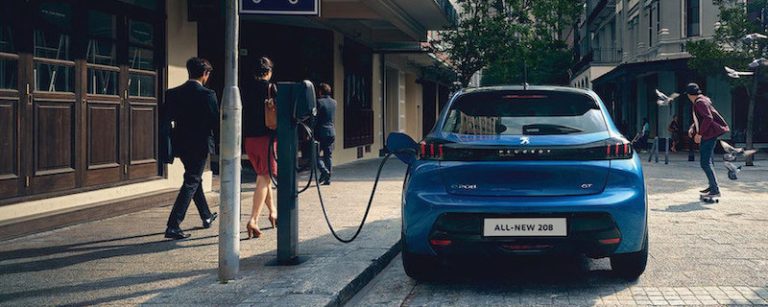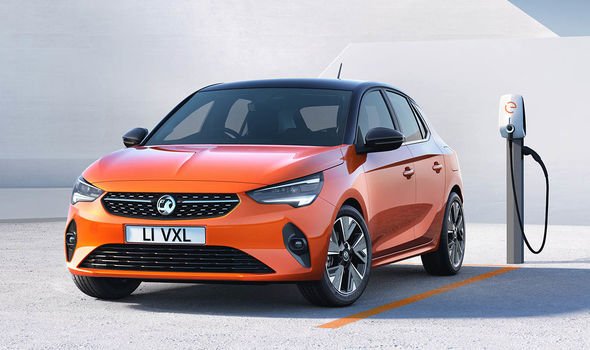Overview
Ferrari, needs little introduction. The Maranello (northern Italy) based luxury sports car manufacturer is without doubt one of the most recognised automative brands globally. Ferrari S.p.A is owned by Fiat Chrysler Automobiles (FCA) and is listed on the New York Stock Exchange (NYSE: RACE) via Ferrari N.V., a Netherlands based legal entity. Ferrari has a market cap of US$ 45 billion.
Ferrari was founded in 1939 by Enzo Ferrari, with a primary objective of developing racing cars. The first Ferrari was built in 1940, and as they say, the rest is history! Though Ferrari is well known for its high performance production sport supercars, the company continues to remain close to its roots via its active and leading participation in the Formula 1 (F1) global races. The Ferrari racing team continues to remain a dominant force in the international racing circuit.
Ferrari is not new to alternative fuel cars. The company displayed a Ferrari F430 based on ethanol at the 2008 Detroit Auto Show. In 2010, Ferrari unveiled a hybrid Ferrari 599 at the Geneva Motor Show. The Ferrari SF90 Stradale is the first production plug-in hybrid electric car from the famed supercar automotive manufacturer.
Though Ferrari has been slow in the race for electrification, the company is now gaining momentum in its vision for an electrified Ferrari fleet. The company has reorganised itself internally to delivery on the electrification vision. The company is expected to debut its first battery-electric vehicle (BEV) i.e. pure electric car, in 2025.
Electric Cars: The Basics
For those of you new to zero-emission electric driving, we recommend a read of the following articles:
Sign up to the e-zoomed Electric Living newsletter
The Ferrari SF90 Stradale PHEV Coupé
The SF90 mid-engined plug-in hybrid electric vehicle (PHEV) is the first from the Italian supercar manufacturer, famed for its roaring internal combustion engines. The ‘SF90’ is in reference to the 90th anniversary of the Scuderia Ferrari racing team. ‘Stradale’ literally means ‘made for the road’.
The all-wheel drive SF90 PHEV has three electric motors, with two independent electric motors located on the front axle, and the third at the rear of the electric vehicle (EV). The plug-in hybrid has a V8 turbo engine capable of delivering up to 780 cv. The electric motors deliver an additional 220 cv, making it the highest power output for any 8-cylinder Ferrari with a total output of 1,000 cv (986 bhp).
The Ferrari plug-in electric car can achieve 0-62 mph in 2.5 seconds and has a top speed of 211 mph. The all-wheel drive (AWD) electric Ferrari will not disappoint in terms of performance, with an astounding lap time of 79 seconds at Fiorano. It is the first Ferrari sports car to be equipped with 4WD.
However, in regards to its ‘electric credentials’, though it certainly is a plug-in electric car, the onboard 7.9 kWh EV battery is limited in its zero-tailpipe emission electric range (15 zero-emission miles). When the EV is not running on e-mode, the tailpipe emissions are as high as 160g (CO2/km).
The SF90 is the only Ferrari that can drive without the engine noise, when on pure electric mode. Ferrari claims a fuel economy up to 39 mpg for the electric vehicle (EV).
The interior of the Ferrari electric car is designed around ‘wraparound aeronautically-inspired concept with particular emphasis on instruments’. The interior includes a head-up display central to the HMI (Human-Machine Interface) concept. The steering wheel incorporates a touchpad, allowing the driver to control every aspect of the supercar. The instrument cluster is digital and includes a 16 inch curved HD display.
The exterior of the plug-in hybrid supercar, as with all other Ferrari supercars, is focussed on achieving maximum performance. The SF90 aluminium body is manufactured at Ferrari’s plant nearby. The EV is equipped with a number of advanced driver assistance systems to include: front radar with acc, adas pack, back radar, front driving camera, rear parking camera, surround view and parking sensors. Not all these come as standard!
This Ferrari electric car does not come cheap. Prices are closer to £400,000. Put another way, for the same budget, one can buy up to ten Tesla Model 3 electric cars! But of course, a Ferrari is a Ferrari!!
Bottom-line, electric driving is good for the environment and the wallet. You can lease electric vehicles (EVs) via e-zoomed at very competitive prices!
| PROS | CONS |
|---|---|
| A high performance plug-in hybrid electric supercar (986 bhp) | A small EV battery (7.9 kWh) and limited electric range (15 miles) |
| Impressive exterior styling and high quality interior specifications | High tailpipe emissions (160g) |
| It is simply a Ferrari! | An expensive PHEV. Prices closer to £400k! |
The Ferrari SF90 Stradale PHEV Coupé (credit: Ferrari)
| At A Glance | |
|---|---|
| EV Type: | Plug-In Hybrid Electric Vehicle (PHEV) |
| Body Type: | Coupé |
| Plug-In Car Grant (PiCG): | Not Available |
| Engine: | Petrol-Electric |
| Available In UK: | Yes |
| Variants (2 Options) |
|---|
| Ferrari SF90 Standard/ Base Pack (from £374,420) |
| Ferrari SF90 Assetto Fiorano (from £400,000) |
| EV Battery & Emissions | |
|---|---|
| EV Battery Type: | Lithium-ion |
| EV Battery Capacity: | Available in one battery size: 7.9 kWh |
| Charging: | On-board charger 3.5 kW |
| Charge Port: | Type 2 |
| EV Cable Type: | Type 2 |
| Tailpipe Emissions: | 154 – 160g (CO2/km) |
| EV Battery Warranty: | N/A |
| Average Cost Of Residential Charging | |
|---|---|
| Battery net capacity : 8.8 kWh | £1.27 |
| Battery net capacity : 11.6 kWh | £1.67 |
| Battery net capacity : 12.0 kWh | £1.73 |
| Battery net capacity : 13.10 kWh | £1.89 |
| Battery net capacity : 14.10 kWh | £2.03 |
- Note 1: The average cost of residential electricity in the UK varies depending on the region, supplier and type of energy used. An average for the UK is 14.40 p/kWh.
- Note 2: Not all EV manufactures make available the data on net EV battery capacity, and in a number of instances the EV battery capacity advertised, does not state if it is gross or net capacity. In general, usable EV battery capacity is between 85% to 95% of the gross available capacity.
| Charging Times (Overview) | |
|---|---|
| Slow charging AC (3 kW – 3.6 kW): | 6 – 12 hours (dependent on size of EV battery & SOC) |
| Fast charging AC (7 kW – 22 kW): | 3 – 8 hours (dependent on size of EV battery & SoC) |
| Rapid charging AC (43 kW): | 0-80%: 20 mins to 60 mins (dependent on size of EV battery & SoC) |
- Note 1: SoC: state of charge
| Dimensions | |
|---|---|
| Height (mm): | 1186 |
| Width (mm): | 1972 |
| Length (mm): | 4710 |
| Wheelbase (mm): | 2650 |
| Turning Circle (m): | N/A |
| Boot Space (L): | 74 |
| SF90 Stradale | |
|---|---|
| EV Battery Capacity: | 7.9 kWh |
| Pure Electric Range (WLTP): | 15.53 miles |
| Electric Energy Consumption (Wh/km): | 120.0 – 123.0 |
| Fuel Consumption (L/100km): | 6.0 – 6.1 |
| Charging: | On-board charger 3.6 kW AC |
| Top Speed: | 211 mph |
| 0-62 mph: | 2.5 seconds |
| Drive: | All-wheel drive (AWD) |
| Max Power (CV): | 1,000 |
| Torque (Nm): | 800 |
| Transmission: | Automatic |
| Seats: | 2 |
| Doors: | 2 |
| Weight (kg): | 1,570 |
| Colours: | 27 |
| NCAP Safety Rating: | N/A |
While e-zoomed uses reasonable efforts to provide accurate and up-to-date information, some of the information provided is gathered from third parties and has not been independently verified by e-zoomed. While the information from the third party sources is believed to be reliable, no warranty, express or implied, is made by e-zoomed regarding the accuracy, adequacy, completeness, legality, reliability or usefulness of any information. This disclaimer applies to both isolated and aggregate uses of this information.








































